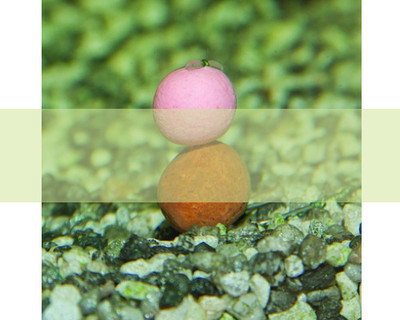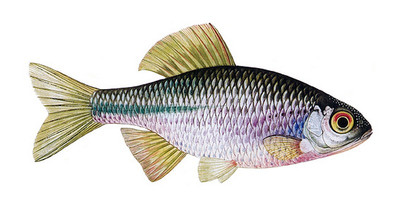Computer modeling: how freshwater fish perceive some colored baits underwater
The Dynamite Baits company (one of the brands of the Rapala company) offers to catch carp and other freshwater cyprinid fish feeding baits containing the fluorescent colorants.
Pink fluorescent pop-ups are ones of the typical examples:
http://www.dynamitebaits.com/products/p/the-crave-fluro-pop-ups
However, in the development of these baits the Dynamite Baits company does not consider achievements of the sensory ecology, which studies, in particular, the optical properties of water environments and how fish perceive different colors (if the fish have color vision) underwater. Therefore, the Dynamite Baits company does not correctly determine the palette of suitable fluorescent colors and does not correctly positioned in the consumer market baits with such colors as exceptionally attractive and successful to catch carp and other freshwater cyprinid fish.
It is known that fresh water absorbs short-wavelength rays and transmits long-wavelength rays, so the maximum of spectral sensitivity of eyes of freshwater fish is shifted to the orange and red parts of the optical spectrum (e.g., Tamura & Niwa, 1967). Therefore, the “white light” for freshwater fish is enriched with the long-wavelength rays (we name this light as “worm light” or “warm white”). In contrast, marine water absorbs long-wavelength rays and transmits short-wavelength rays, so the maximum of spectral sensitivity of eyes of saltwater fish is shifted to the blue and green parts of the optical spectrum (Tamura & Niwa, 1967). Therefore, the “white light” for saltwater fish is enriched with the short-wavelength rays (we name this light as “cool light” or “cool white”).
For more information how fish perceive colors, see Vorobyev et al. (2001).
It means that baits with pink color, which is one of the numerous combinations of red, green and blue colors, are not suitable for the freshwater environment. Baits with pink color loss mostly blue color, when observed through yellow-and-green water column (see Fig. 1), and, in final sum, baits with pink (or similar) color become in the eutrophicated water (where carps live) dirty shade.

Fig. 1. Baits of the Dynamite Baits company with pink color observed through the yellow-and-green optical filter.
Color coordinates are given in Table 1.
|
Color and its location in Fig.1
|
Hex Code
# RRGGBB
|
Decimal Code
R,G,B
|
|
pink,
upper part of pop-up
without filter
|
# FAC8E3
|
RGB (250,200,227)
|
|
dirty,
lower part of pop-up
with filter
|
# E0C8B3
|
RGB (224,200,179)
|
Table 1. Color coordinates of pink color observed without and through yellow-and green filter.
It is necessary to add that many freshwater fish have in their nuptial coloration various combinations of short wavelength (violet, blue) and long wavelength (red) colors. An example is rosy bitterling, Rhodeus ocellatus (Fig. 2). However, short wavelength colors are used at short distances in the private interspecific communication channel relatively inaccessible to predators.

Fig. 2. Coloration of freshwater rosy bitterling, Rhodeus ocellatus.
Basic references
Tamura T., Niwa H. 1967. Spectral sensitivity and color vision of fish as indicated by S-potential. Comparative Biochemistry and Physiology 22, 745-754
Vorobyev M., Marshall J., Osorio D., de Ibarra N.H., Menzel R. 2001. Colourful objects through animal eyes. Color Research & Application 26, S214-S217





